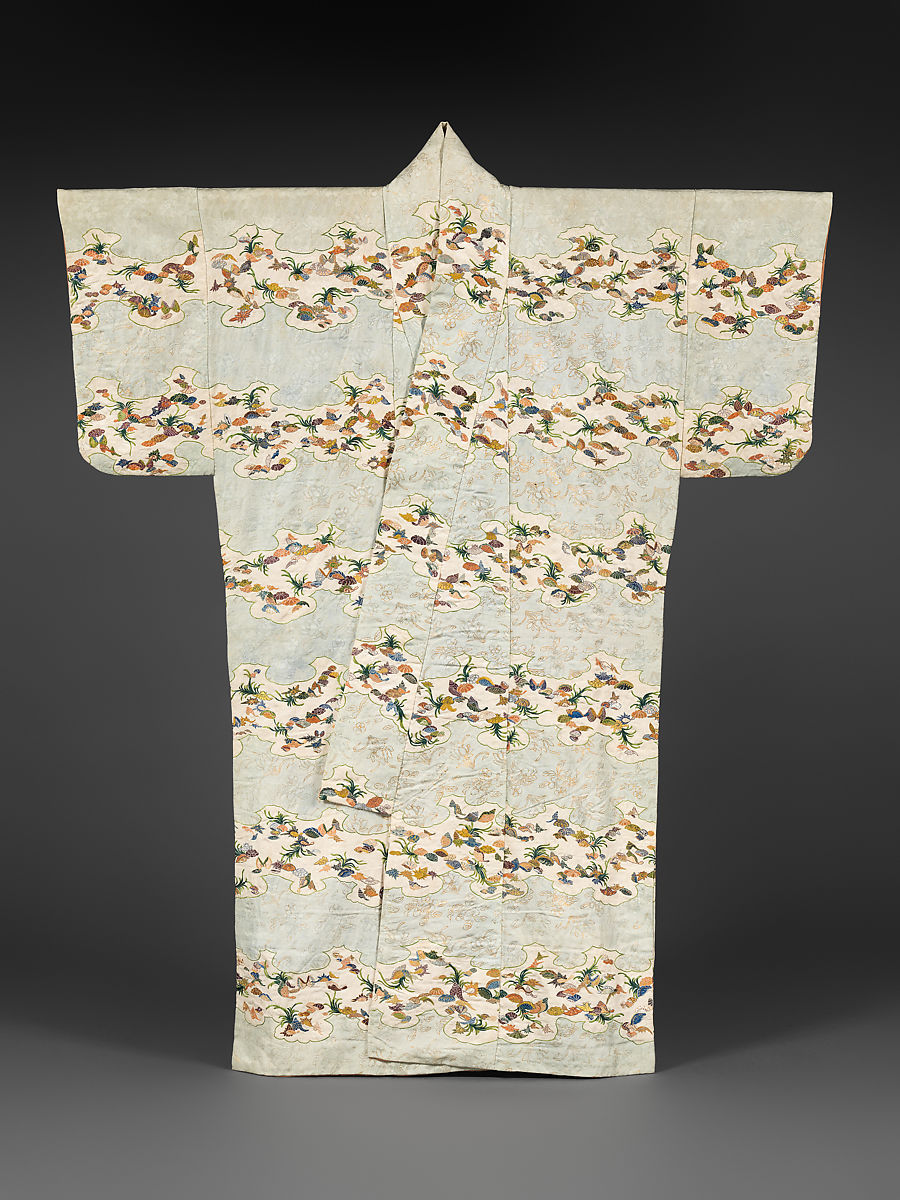Robe (Kosode) with Shells and Sea Grasses

Full description
This Kimono features a simple and repetitive pattern of shells and grasses running horizontally across the garment. This repetitive design would have been easy to produce on fabric, meaning it would have been relatively inexpensive. The colors are muted and very simple, which points to a much less labor intensive dyeing process. While some pieces of the design are embroidered, the garment is still fairly uncomplicated. The simplicity of this kimono means it would have cost very little to make, and was likely worn by a member of the lower class. Affordability was a huge component in creating a divide between kimono styles and classes in the Edo period. Inexpensive materials, like the dyes featured in this kimono, would have been popular among everyday citizens because they wouldn't be able to afford something more luxurious. The strict class division was one way the Shogunate was able to maintain such a strict class system for so long, and fashion acted as a visual indication of separation. Eva-Grace Petrie. Image from The Met Resources.
Comments
to view and add comments.
Annotations
No one has annotated a text with this resource yet.
- typeImage
- created on
- file formatjpeg
- file size261 kB


